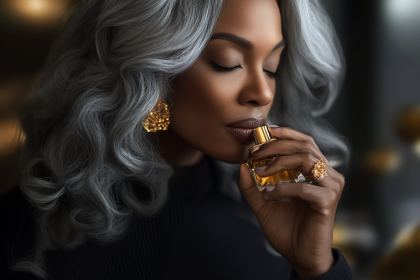Our nails often go unnoticed, relegated to being simply aesthetic appendages. But beneath that glossy coat of polish — or underneath the dirt for those who prefer a more natural look — lies a wealth of information about our overall health. The health of your nails can provide subtle clues about what’s going on inside your body.
This article will delve into the world of nail diagnostics, exploring how different changes in appearance, texture and growth rate can signal potential underlying conditions. Remember, this information is not a substitute for professional medical advice. If you notice any concerning changes, it’s always best to consult a doctor or dermatologist for a proper diagnosis.
Understanding your nails
Before we dive into the nitty-gritty of nail diagnostics, let’s establish some basic nail anatomy. The visible part of your nail is called the nail plate, composed of keratin, a protein also found in your hair and skin. The white crescent moon-shaped area at the base of your nail is the lunula. The lunula is responsible for nail growth, and healthy lunulas’ should be faintly visible on most fingernails.
The nail bed is the skin beneath the nail plate, rich in blood vessels, which is why our nails appear pink. The cuticle is the thin layer of skin that seals the nail plate to the fingertip, preventing bacteria and moisture from entering. Maintaining healthy cuticles is crucial for overall nail health.
Signs of a healthy nail
Healthy nails should be:
- Smooth and free of ridges or pitting
- Consistent in color, usually a light pinkish-beige
- Firm but slightly flexible
- Free of breaks or splits
- Exhibiting normal growth rate (around 1/8 inch per month)
Having healthy nails goes beyond just aesthetics. It signifies that your body is absorbing nutrients effectively and that your overall health is good.
What your nails are trying to tell you: Decoding nail changes
Now that you understand the basics of healthy nails, let’s explore how changes in their appearance, texture and growth can indicate potential health concerns.
-
Color:
- Pale nails: Pale or white nails can sometimes be a sign of anemia, iron deficiency, or vitamin B12 deficiency.
- Yellow nails: Yellow nails can be caused by fungal infections, psoriasis or respiratory problems.
- Dark streaks: Dark brown or black streaks under the nail can be concerning and warrant a visit to a doctor to rule out melanoma, a type of skin cancer.
- White spots: Small white spots are usually harmless and can be caused by minor injuries. However, extensive white spots across multiple nails can be associated with zinc deficiency.
-
Texture:
- Brittle nails: Brittle nails that crack or break easily can be caused by dehydration, vitamin deficiencies (especially biotin), or excessive exposure to harsh chemicals.
- Spoon-shaped nails: Spoon nails, where the center dips inwards, can be linked to iron deficiency anemia.
- Clubbed nails: Clubbed nails, where the tips of the fingers widen and the nails curve downwards, can be associated with lung problems, heart disease or inflammatory bowel disease.
-
Growth:
- Slow growth: Slow nail growth can be a natural part of aging or indicate nutritional deficiencies.
- Pitting: Small dents or pits in the nail plate can be caused by psoriasis, alopecia areata (an autoimmune disease causing hair loss) or nutrient deficiencies.
- Beau’s lines: Deep horizontal indentations across the nails can be a sign of a recent illness, nutritional deficiency or zinc deficiency.
Remember: These are just some general associations, and some changes may be due to other factors like injury or nail-biting habits. If you notice any concerning changes, it’s always best to consult a health care professional.
Maintaining healthy nails: Prevention is key
Just like the rest of your body, your nails thrive with proper care. Here are some tips to keep your nails healthy:
- Maintain a balanced diet: Ensure your diet is rich in essential vitamins and minerals like biotin, iron and B vitamins, which contribute to healthy nail growth.
- Stay hydrated: Drinking plenty of water keeps your body and nails hydrated, preventing dryness and brittleness.
- Protect your nails: Wear gloves when doing housework or gardening to shield your nails from harsh chemicals and detergents.
- Moisturize regularly: Use a cuticle oil or lotion to keep your nails and cuticles hydrated.
- Practice good hygiene: Keep your nails clean and avoid biting them, which can harbor bacteria and lead to infections.
- Be gentle with your nails: Avoid using harsh nail polish removers and choose acetone-free options.
While the previous section provided a general overview of nail changes and potential associations, here’s a deeper dive into some specific nail concerns and ways to address them:
- Fungal nail infections: Fungal infections can cause nails to become thick, discolored and brittle. Topical antifungal medications or oral medication prescribed by a doctor are usually the treatment course.
- Psoriasis: Psoriasis can manifest in the nails, causing pitting, discoloration and separation from the nail bed. Treatment typically involves topical medications, steroid injections or phototherapy.
- Nail biting: Nail biting is a common nervous habit that can damage the nails and surrounding skin. Consider stress management techniques, applying a bitter-tasting nail deterrent, or keeping your nails trimmed and neat to discourage biting.
Taking care of your nails: Pampering with a purpose
Nail care goes beyond just maintaining healthy nails. It can be a form of self-care and a fun way to express yourself. Here are some tips for incorporating pampering into your nail routine:
- Manicures and pedicures: While not essential for healthy nails, getting regular manicures and pedicures can be a relaxing and enjoyable experience. Opt for salons that use sterilized tools and high-quality products.
- At-home spa treatments: Pamper yourself with DIY spa treatments at home. Soak your nails in warm water with olive oil, followed by a gentle massage with lotion.
- Express yourself with nail art: There’s a world of nail art designs to explore! From simple pops of color to intricate patterns, unleash your creativity and personalize your nails.
Your nails: A window to your health
By understanding your nails and the subtle messages they convey, you can gain valuable insights into your overall health. Remember, healthy nails are typically smooth, strong and have a consistent pinkish-beige color. However, any significant changes in color, texture or growth rate warrant a visit to a health care professional for proper diagnosis.
Maintaining healthy nails is a multi-pronged approach. Nourish your body with a balanced diet, prioritize hydration and protect your nails from harsh chemicals. Regular moisturizing, gentle care and good hygiene go a long way in keeping your nails strong and beautiful. Don’t forget to embrace nail care as a form of self-care and have fun expressing yourself through nail art!
By incorporating these tips into your routine, you can keep your nails healthy and make them a source of confidence and self-expression. Remember, beautiful nails often reflect a healthy you!
This story was created using AI technology.











